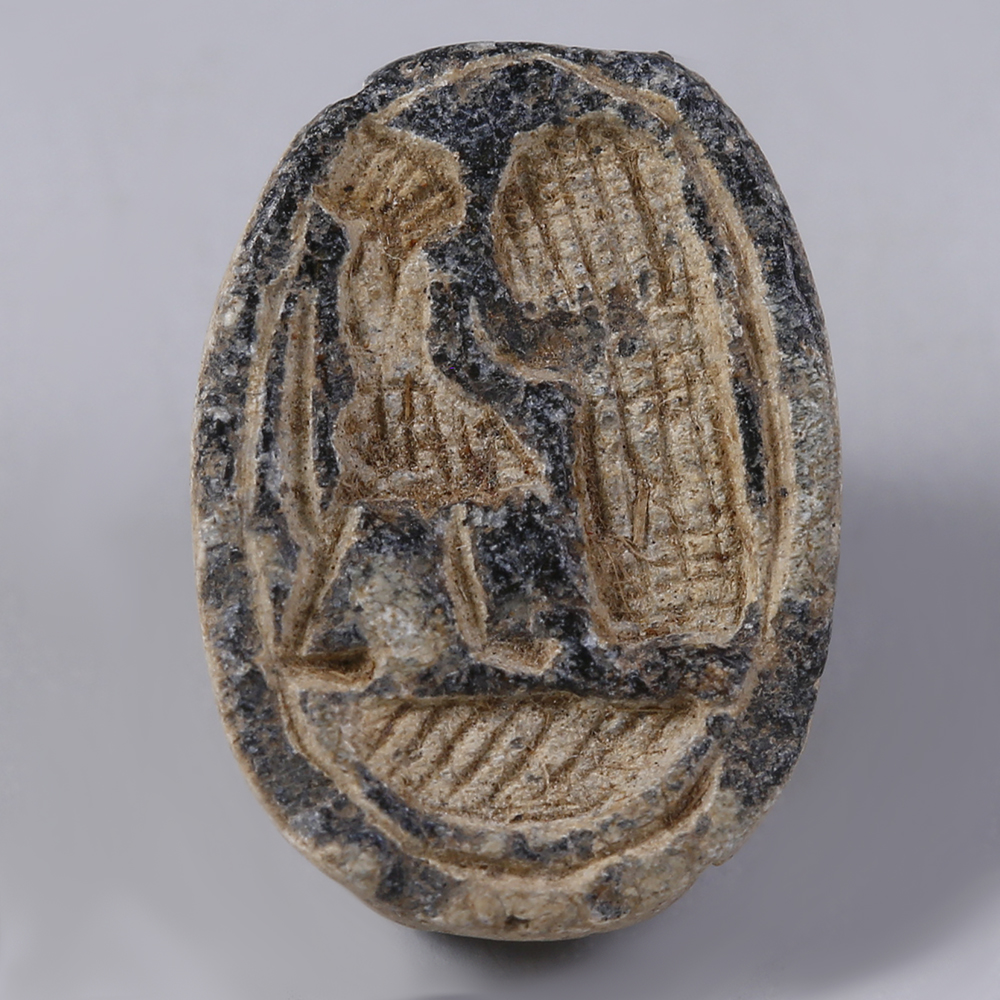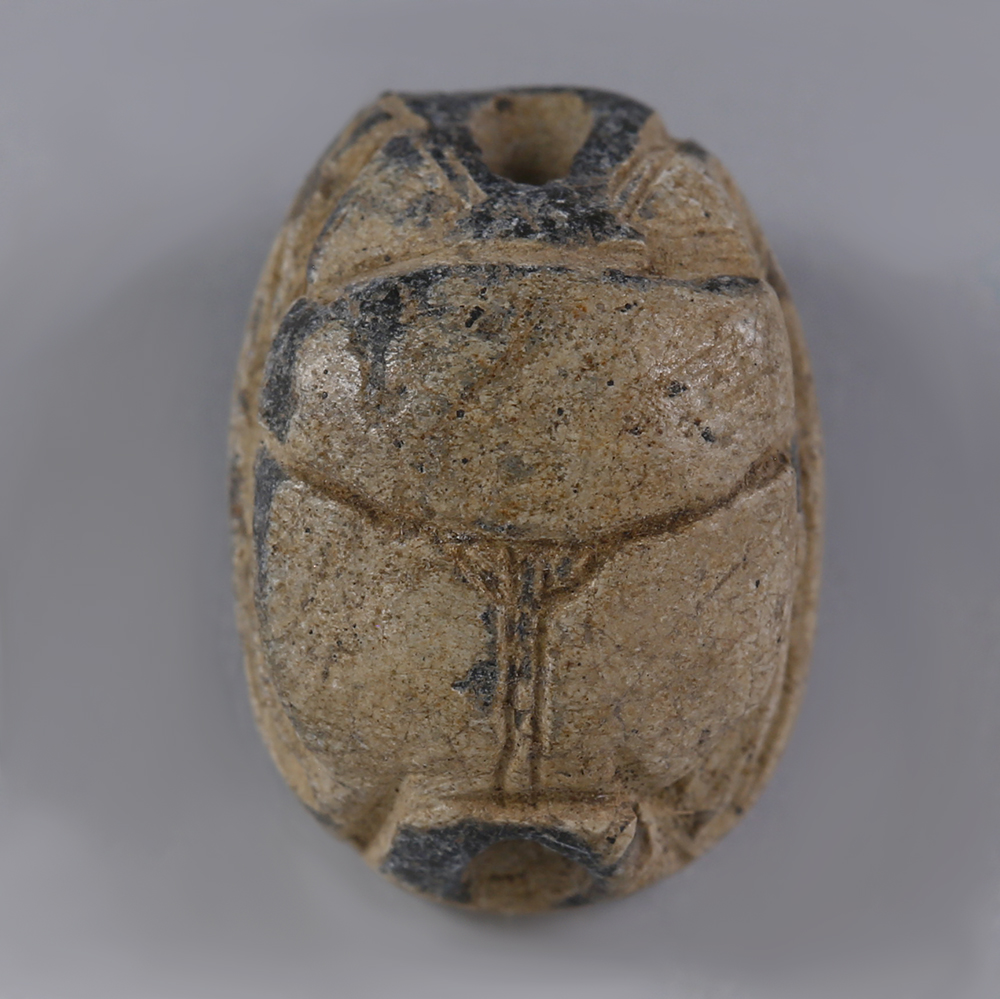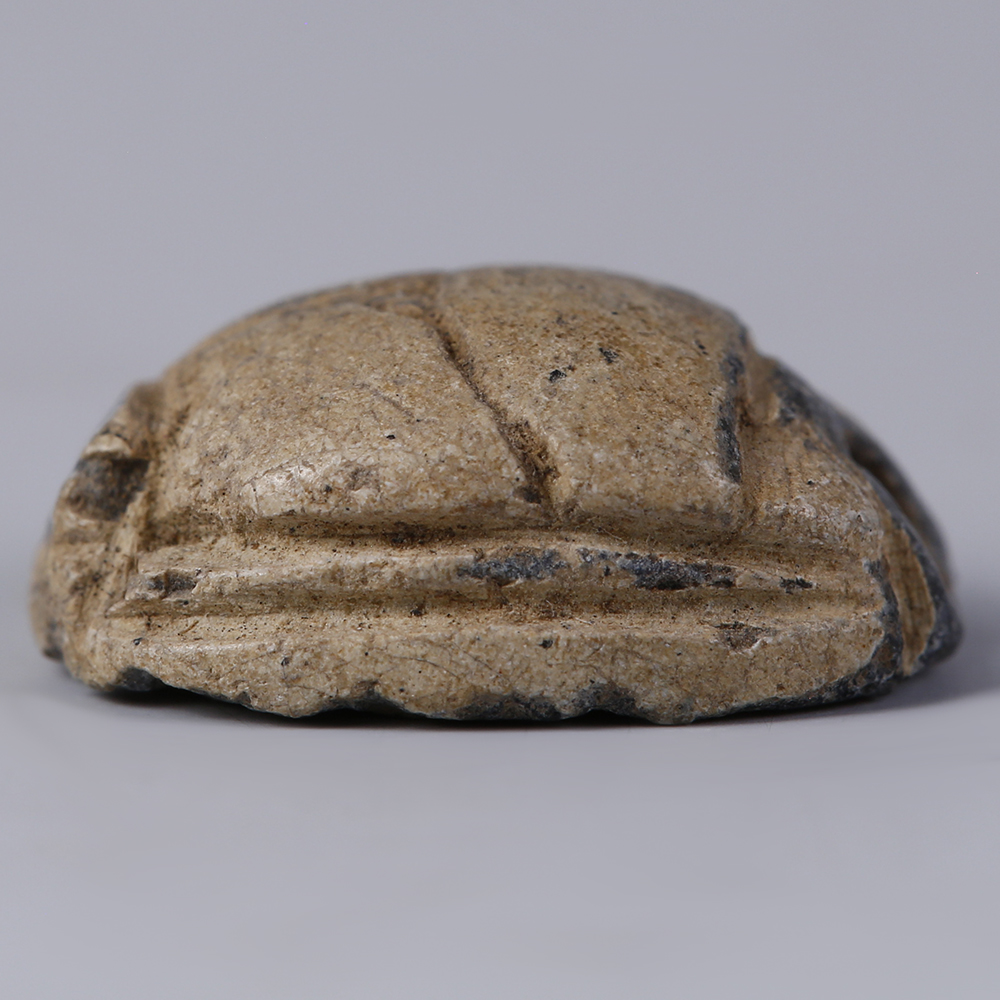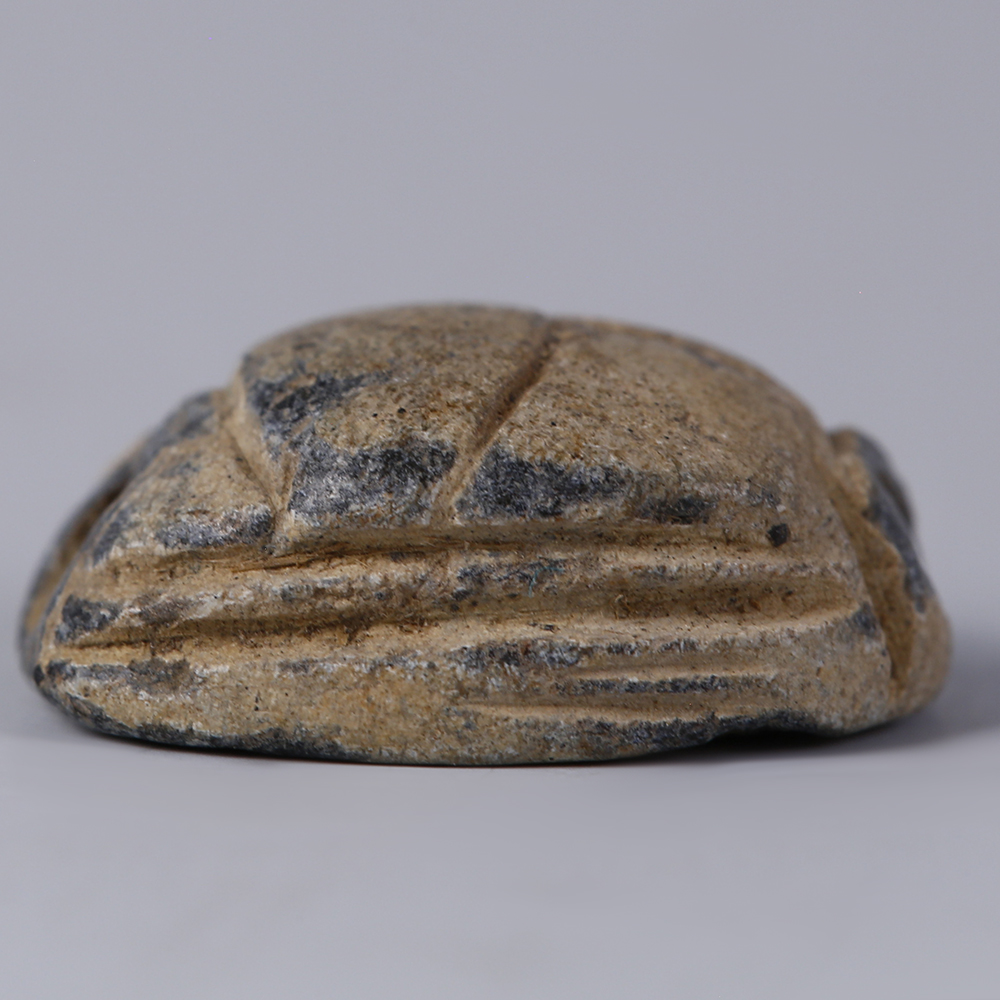The ancient Egyptians believed the Scarabeus Beetle was able to regenerate itself spontaneously from cow dung, which these beetles could be observed rolling into small balls and burying. Consequently, the scarab came to symbolise a spontaneous continuation of the life cycle. The Egyptians regarded the scarab as an embodiment of the creator god, who was accordingly self-engendered.
To find out more about Ancient Egyptian amulets please see our relevant blog post: Egyptian Amulets and their Meanings.



